‘Useful sciences, economic principles, the general spirit of enlightenment: see here what Spain owes to the reign of Charles III’, declared Gaspar Melchor de Jovellanos shortly before that king’s death in 1788. Three new exhibitions in Madrid explore the life and legacy of Charles, Spain’s answer to Frederick the Great and its very own enlightened absolutist, with the accent falling variously on the first and second of these words.
Charles was born in Madrid in 1716, but he came of age in the political cockpit of Italy, where, thanks to the machinations of his mother, Elisabeth Farnese, he became duke of Parma and, a few years later, king of Naples. Spanish princes until then had hardly been renowned for liberality of thought: autos-da-fé continued to be celebrated in Madrid and other Spanish cities in the early 18th century, sometimes in the presence of royalty. But in Italy, dogma had long played second fiddle to expediency. When Charles returned to Spain in 1759 to take the throne following the death of his brother Ferdinand VI, he was a past master of the art of the possible, accustomed to pursuing success via the means at his disposal rather than by appeals to God.
Charles’s time in Naples coincided with a revival of interest in the ancients, spurred on by the rediscovery of Pompeii and Herculaneum. This, according to the exhibition ‘Charles III and the Madrid of the Enlightenment’ at the Museo de Historia de Madrid, had a profound effect on the king’s sense of vocation. He placed himself at the forefront of excavation projects, sponsoring archaeological digs and keeping abreast of their findings, all the while seeking to associate himself with the supposed virtues of classical society.
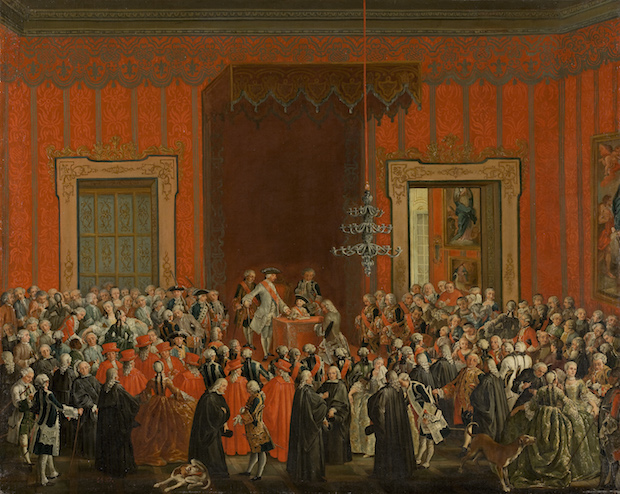
Charles III Renouncing the Crown of Naples (1759), Michele Foschini. Museo del Prado
Michele Foschini’s painting of Charles signing the instrument of abdication as king of Naples in 1759 shows courtiers openly weeping at the departure of their civilised and industrious sovereign. But Italy’s loss was Spain’s gain. After assuming the Spanish throne, Charles instituted a series of reforms, deregulating the economy, establishing chambers of commerce, setting up new industries, promoting ‘useful science’ and expelling the Jesuits. Madrid, as the seat of government, was the principal beneficiary, so much so that Charles earned the moniker ‘Madrid’s best mayor’. The many architectural drawings in this exhibition testify to the makeover the city received. Charles established a new customs house, hospital, porcelain factory and museum of natural history – the forerunner to the Prado – and also oversaw improvements to the sewage system, street lighting and roads. Municipal government was reorganised, theatres were renovated and broad-brimmed hats, favoured by brigands, were banned. No aspect of public life, it seems, was immune from the new spirit of reason: a fanciful engraving by Isidro Carnicero shows a bullfight en l’air, with a matador and bull enacting the rituals of the corrida while suspended from balloons.
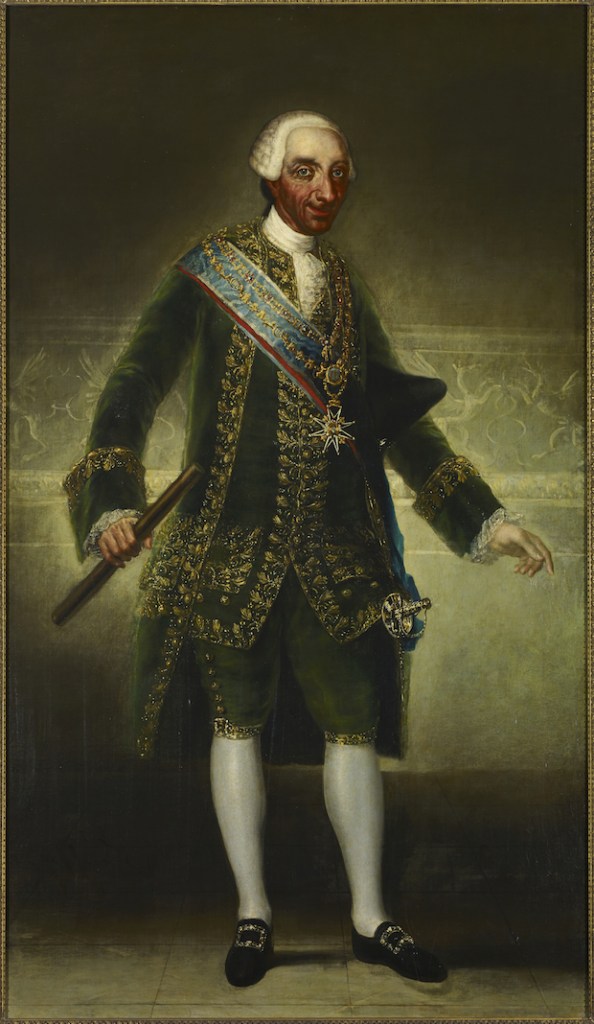
Charles III (1786–87), Francisco de Goya y Lucientes. Banco de España Collection
The theme of enlightened rule is developed in the exhibition ‘Charles III: The External and Scientific Implications of an Enlightened Reign’ at the Museo Arqueológico Nacional (until 26 March). The kindly, paternal, faintly rustic-looking figure of Goya’s famous portrait appears with a harder edge here. We encounter not Spain’s citizen number one, but a global monarch in the mould of Charles V, king on five continents. The halo of reason is still very much in place, but in the narrow sense of reason of state. The king’s overriding concern, this exhibition suggests, was to bolster Spain’s international position; rationalism was the means to achieve this. A portrait of George Washington appears here, not because of any known commitment on Charles’s part to the rights of man, but in tribute to the support he lent the American revolutionaries in the hope of undermining British maritime supremacy.
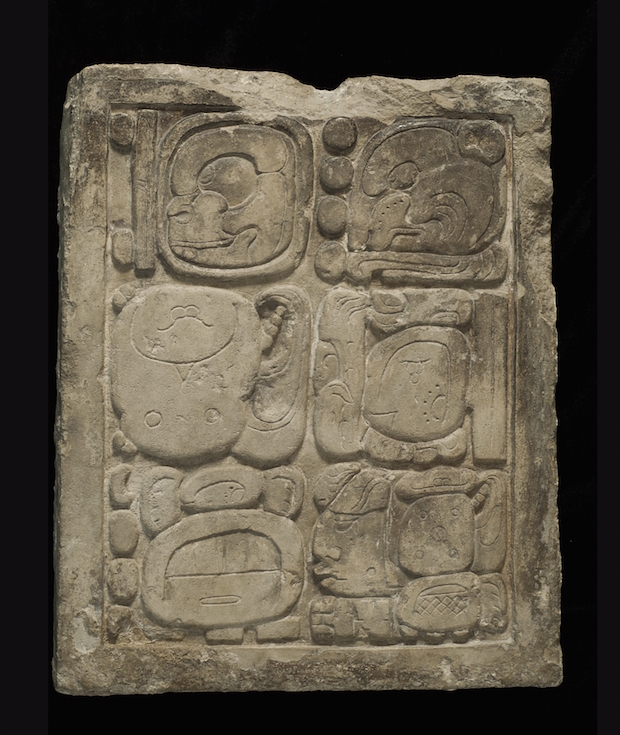
Glyph panel (600–900), Mayan. Museo de América, Madrid
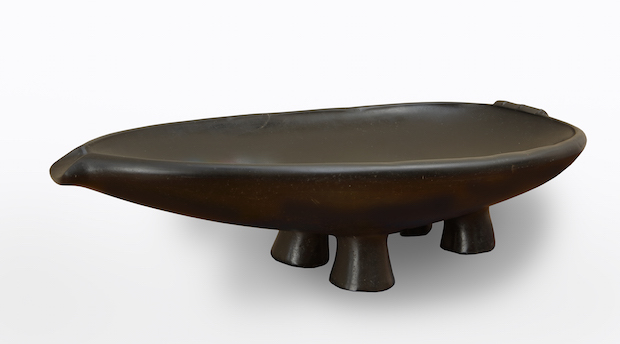
Umete (18th century), Tahiti. Museo Nacional de Antropología, Madrid
Charles, the exhibition contends, believed that the increase of knowledge would bring about the magnification of royal power. In the most practical sense, this meant consolidating Spain’s empire through internal reforms and naval improvements, while encouraging the colonies to adopt modern production methods. But it also entailed the mobilisation of ‘soft power’. In the Europe of the Enlightenment, knowledge meant prestige, as Manuel Camarón Meliá’s allegorical painting of Charles III surrounded by figures representing the arts and sciences affirms in a none-too-subtle way. Charles launched enquiries into the Iberian peninsula’s Muslim past and, even after succeeding to the Spanish throne, continued to subsidise archaeological research in Italy, some of the fruits of which are displayed here. If patronage of this kind could draw attention to the vastness of one’s empire, so much the better. Inca vases, Mayan reliefs, Tahitian bowls and Hawaiian headwear are among the yields displayed here of the explorations undertaken in the king’s name in the Americas and the Pacific. Plants were brought from the furthest reaches of the empire to embellish the royal botanical garden. Universal monarchy in the 18th century meant not merely territorial dominion, as in the age of Charles V, but intellectual imperium as well.

A recreation of the room in which Charles’s III lay in state in 1788, at the Royal Palace of Madrid. Copyright Patrimonio Nacional
As if to make plain the parallels between Charles III and his illustrious 16th-century ancestor, the exhibition ‘Charles III: Majesty and Ornament’ at the Royal Palace of Madrid (until 31 March) has at its heart a recreation of the room in which the king, following Habsburg custom, lay in state after his death in 1788 ‘for any person, of either sex, without distinction of classes’ to see. An ornate bed and canopy of rich damask is flanked on either side by the spectacular tapestries Charles V commissioned to celebrate his conquest of Tunis in 1535.
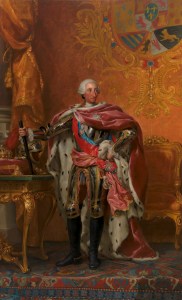
Charles III , Antonio Rafael Mengs (1728–1729). Copyright Patrimonio Nacional
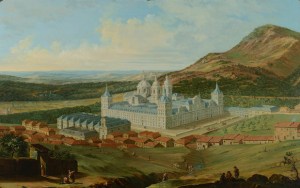
View of the royal site and monastery of San Lorenzo de El Escorial (c. 1754), Antonio Joli. Copyright Patrimonio Nacional
In this exhibition, the figure of the enlightened ruler is reduced to a shadow. The king it presents is very much a monarch of the conventional type, bound by tradition and preoccupied with magnificence. The abiding image of Charles here comes from Anton Raphael Mengs’ full-length portrait, showing the sovereign in ermine robes and armour, standing in front of a sumptuous cloth of gold, baton of command in hand, crown and sceptre close by. A similar impression is left by the imposing series of paintings Charles commissioned from Antonio Joli of Spain’s royal palaces, several of which were enlarged during his reign. Elsewhere, the exhibition chronicles the king’s mania for hunting, an activity he pursued with such vigour that, according to a gentleman in waiting, when he was shirtless ‘it appeared that a porphyry head and hands had been placed on an ivory body’. But perhaps most at odds with the notion of Charles as a cast-shattering monarch is the set of paintings of Christ’s passion that Mengs completed for his bedchamber. What would Voltaire have had to say of a king who knelt at night before the sight of Christ’s flagellation and woke the next morning to the spectacle of the Messiah’s blanched and bloodied body being laid on the ground?
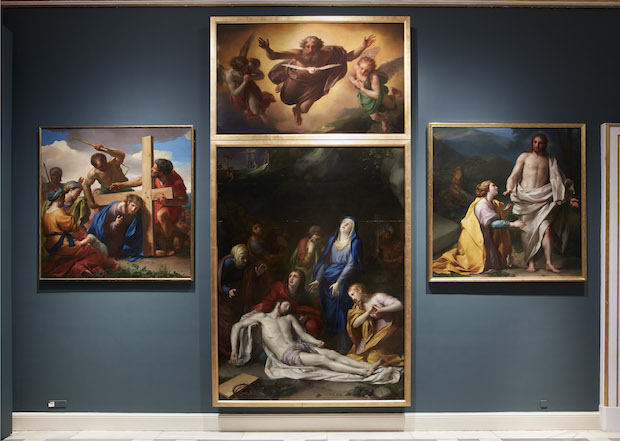
Installation view of Mengs’ cycle of the Passion at the Royal Palace of Madrid. Copyright Patrimonio Nacional
Charles’s death on the eve of the French Revolution spared him the ordeal of having to reconcile the divergent qualities of enlightenment and absolutism that these exhibitions bring out. If Charles III is to be considered as a universal monarch, it is perhaps only in the sense that he managed to embody in his person the full and often contradictory range of royal identities.
Unlimited access from just $16 every 3 months
Subscribe to get unlimited and exclusive access to the top art stories, interviews and exhibition reviews.

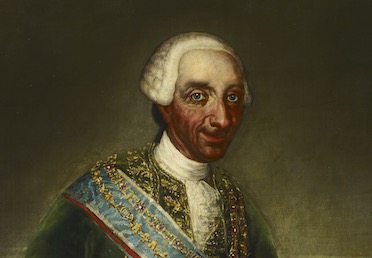
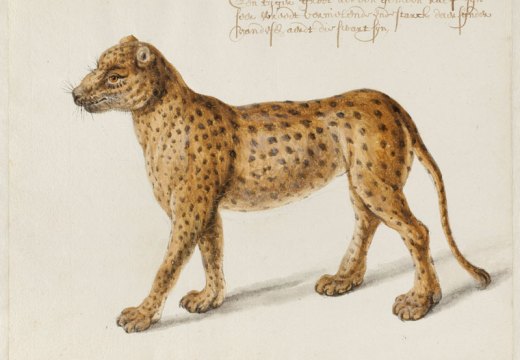
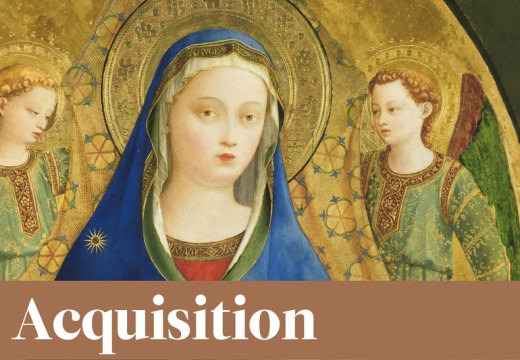
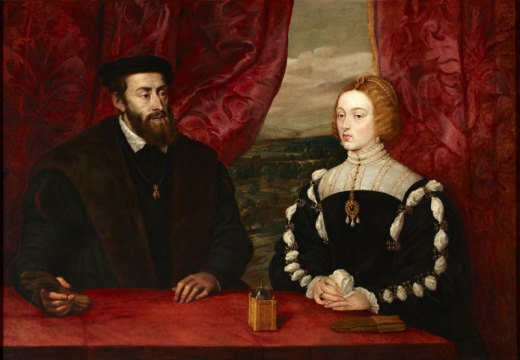









![Masterpiece [Re]discovery 2022. Photo: Ben Fisher Photography, courtesy of Masterpiece London](http://www.apollo-magazine.com/wp-content/uploads/2022/07/MPL2022_4263.jpg)
Has the Fitzwilliam got its rehang right?